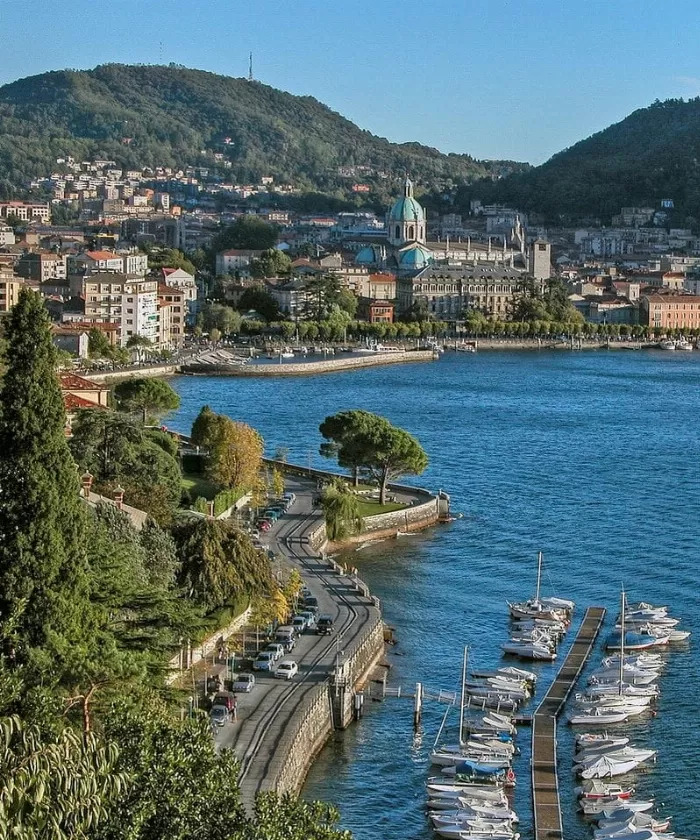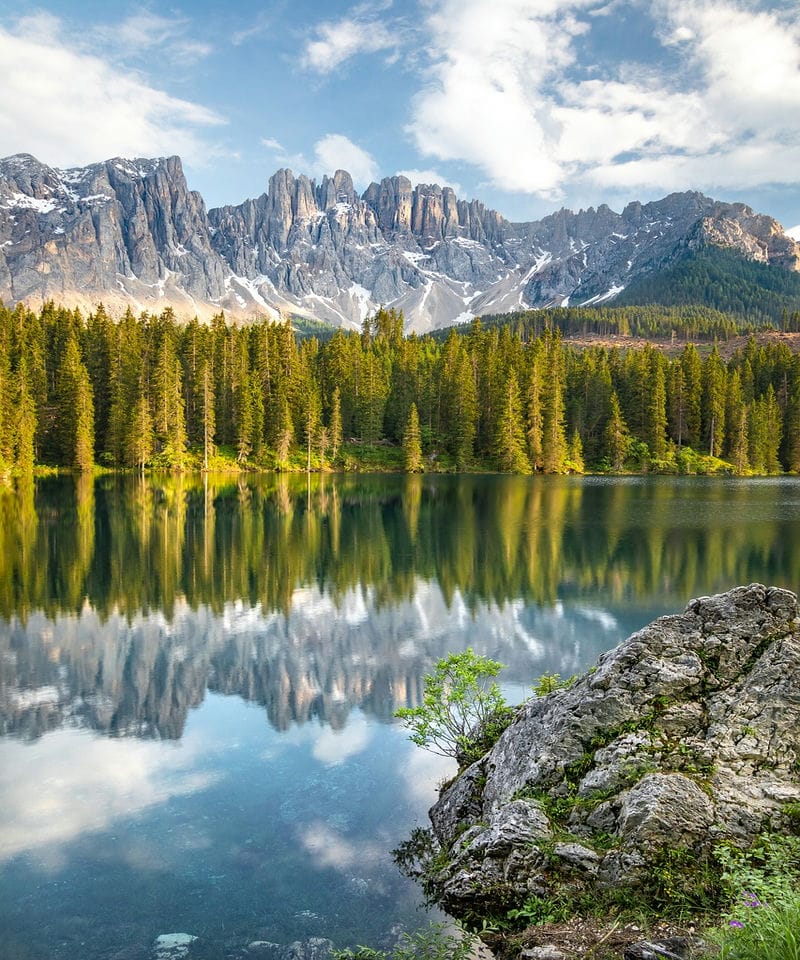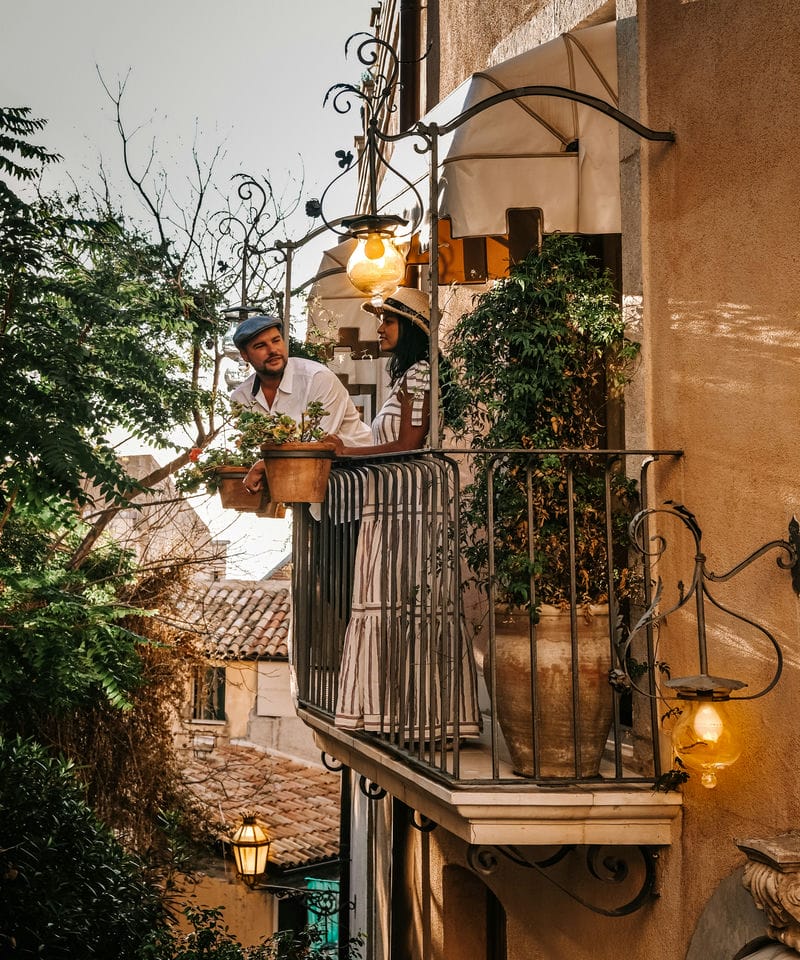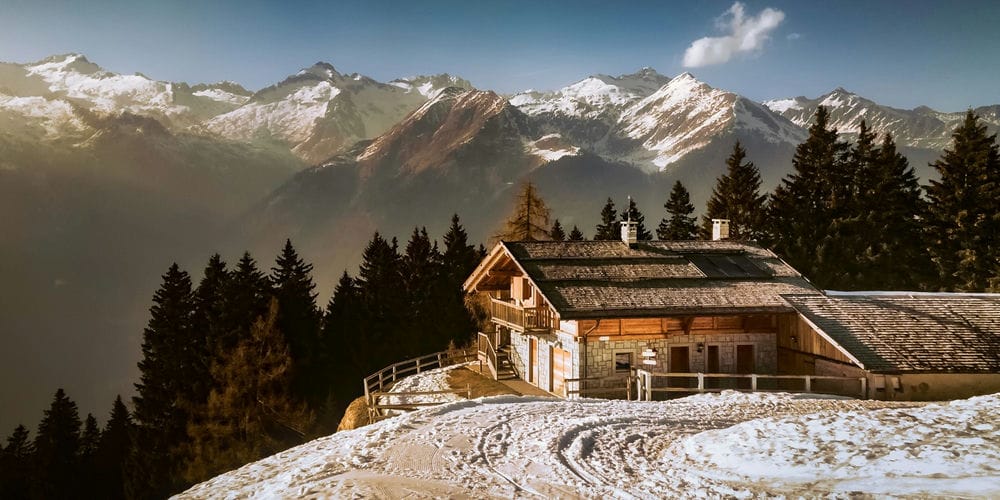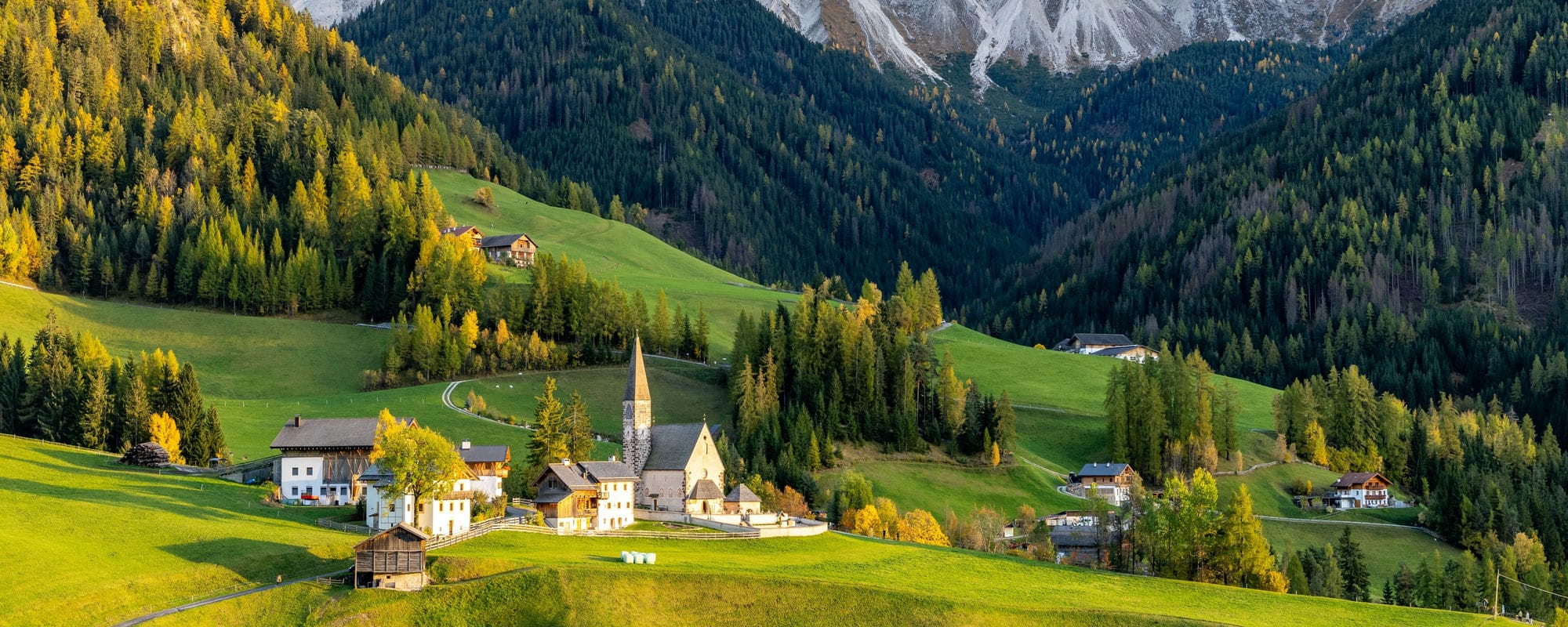
Hiking the Dolomites: Essential Tips for an Unforgettable Adventure
Key Takeaways
- Hiking the Dolomites is not an easy but definitely gratifying task.
- The Dolomites have hiking options for all skill levels.
- Hut-to-hut hiking offers extended exploration.
- Visit in late spring or early autumn for ideal conditions.
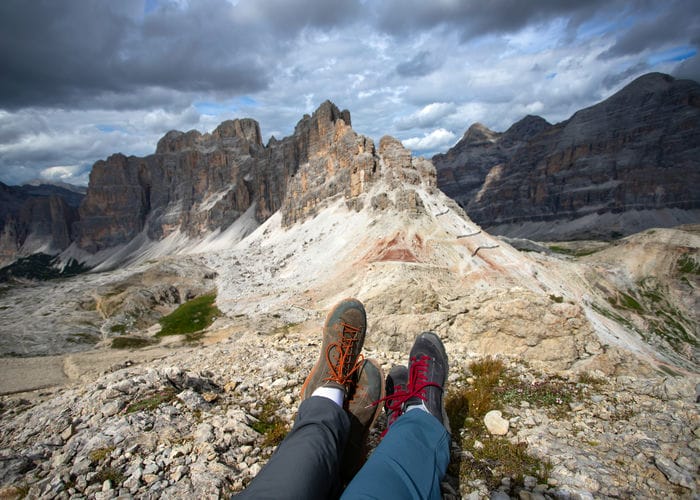
Exploring the Dolomites offers a remarkable hiking experience for enthusiasts and nature lovers alike.
Nestled in northeast Italy, this UNESCO World Heritage Site boasts dramatic landscapes that include rugged peaks, serene lakes, and lush valleys.
The Dolomites provide a range of trails that cater to all levels, ensuring both beginners and seasoned hikers can find their adventure.
Trekking through the Dolomites reveals breathtaking views at every turn, from the iconic Tre Cime di Lavaredo to the charming Brenta Dolomites.
For those interested in more extended adventures, hut-to-hut hiking allows travelers to immerse themselves in the natural beauty while enjoying rustic accommodation.
Each season offers a unique perspective, with the summer months presenting the most favorable conditions for outdoor activities.
History And Geography Of The Dolomites
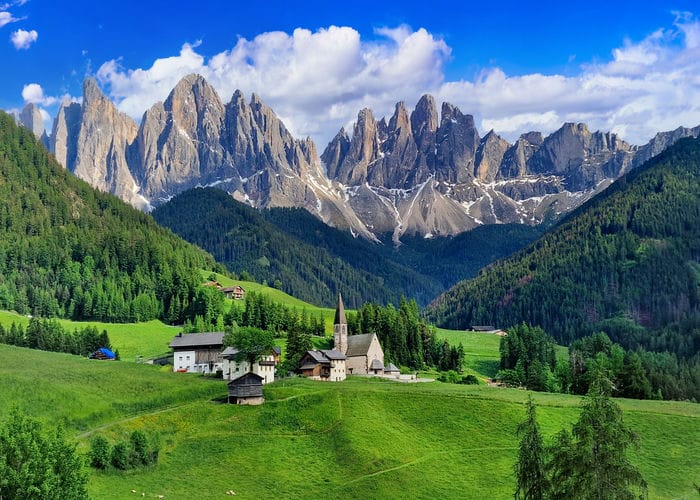
The Dolomites, located in northern Italy, boast a unique geological formation and a rich history that makes them a remarkable destination.
Known for their breathtaking landscapes and iconic peaks, the Dolomites are also home to diverse regions like South Tyrol and feature notable mountains like Marmolada.
Geological Formation And Significance
The Dolomites are part of the Southern Limestone Alps, a distinction that underscores their unique geological makeup.
These beautiful mountains were formed over millions of years through the accumulation of marine sediments.
The key feature of these mountains is the mineral dolomite, named after the French geologist Dieudonné Dolomieu, who studied these formations in the 18th century.
The rock's unique ability to glow in golden and pink hues during sunrise and sunset adds to their allure.
Historical Background
Historically, the Dolomites have been a significant region during various periods, including World War I.
The mountains were a frontline between Italian and Austro-Hungarian forces. Evidence of this history is still visible through the remains of trenches and tunnels.
Before modern times, small communities thrived here, influenced by various cultures due to its position at a crossroads of Europe.
Overview Of The Regions Within The Dolomites
The Dolomites cover multiple regions, each offering distinct experiences.
South Tyrol is known for its blend of Austrian and Italian cultures. Another notable area is Trentino, known for its valleys and lakes.
Marmolada, the highest peak, stands prominently and is a favorite for hikers. Other peaks like Cima Tofana offer challenging trails and stunning views.
Best Time To Hike The Dolomites
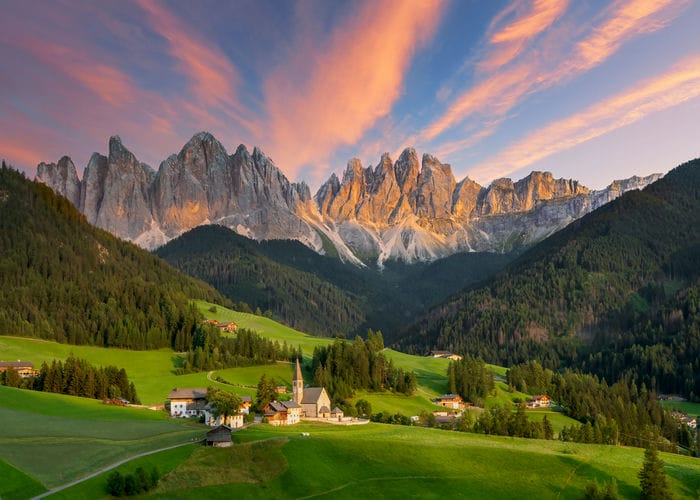
The ideal months for hiking in the Dolomites are generally from June to October. During this time, hikers can enjoy favorable weather, fewer closures, and stunning landscapes that change with the seasons.
Optimal Seasons For Hiking
The peak hiking season in the Dolomites runs from late June to early October.
Early summer, in June and July, is perfect if you want to avoid large crowds and enjoy blooming wildflowers.
By August, the trails are busier as it is the warmest month, drawing many tourists.
September offers cooler temperatures and the beginning of fall colors, while early up until mid October provides quiet trails and crisp air, making it a great time for those who prefer solitude.
Weather Considerations
Weather in the Dolomites can vary greatly between seasons.
The Summer season brings warm days and cool nights but always be prepared for sudden rain showers.
August is the warmest, but also the wettest, requiring waterproof gear.
As autumn begins in September, temperatures drop, leading to cooler daytime hikes.
Hikers should avoid November through April as it is the off-season, many trails close, and the risk of snow becomes significant, limiting accessibility and safety.
Seasonal Highlights
Each season in the Dolomites has its own charm.
June to July captivates with lush green landscapes and vibrant wildflowers, ideal for nature photography.
The August peak with its lively atmosphere is perfect for those who enjoy the company of fellow hikers.
September welcomes enchanting fall foliage, creating a picturesque scene against the rocky backdrop.
October allows hikers to experience serene paths and potentially catch a breathtaking sunset over quiet, tranquil trails.
Essential Gear For Hiking The Dolomites
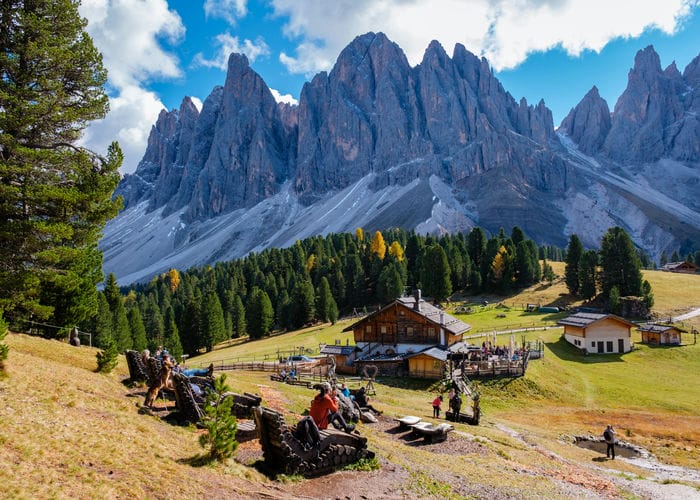
Preparing for a hiking trip in the Dolomites requires careful selection of gear.
Hikers need to focus on warm clothing and footwear suited for changing weather, reliable navigation tools, and essential safety items.
Clothing And Footwear
Choosing the right clothing and footwear is crucial.
Hikers should pack both short-sleeve and long-sleeve shirts, along with a light jacket for changing temperatures, especially on a multi-day hike.
Quick-dry materials are advisable to stay comfortable. Hiking pants paired with breathable underwear can enhance comfort on long trails.
Footwear should include durable hiking boots with good ankle support.
It’s important to break them in before the trip to avoid blisters. Insulated layers are recommended for cooler days, while waterproof gear is necessary for unpredictable weather conditions even if you go down the same route you have before.
Navigation Tools And Maps
Accurate navigation tools are vital.
A detailed Dolomites hiking map is necessary to navigate the extensive network of trails.
Hikers can also benefit from a GPS device, which provides real-time location tracking.
Carrying a compass as a backup is smart planning, ensuring navigation even when technology fails, so you don't end up in Lake Garda.
Keeping these tools in waterproof cases is advisable to protect them from rain. Understanding how to read the map and operate the GPS device before starting the hike is essential.
Safety And First Aid Essentials
Safety gear is indispensable for any hiking trip.
A first aid kit should include bandages, antiseptic wipes, and adhesive tape, addressing minor injuries.
Climbing aids such as harnesses and helmets are crucial for those exploring via Ferrata routes.
Hikers should also carry a whistle and a flashlight for emergency situations.
A compact multi-tool can be handy for various needs along the hike.
Energy bars or trail snacks are vital to maintaining energy levels. Hydration systems, like a water bottle or hydration pack, are also necessary to stay hydrated throughout the trek.
For good measure, we also highly suggest hikers bring a sleeping bag with a sleeping bag liner for a potential overnight stay or wild camping.
Top Hiking Routes In The Italian Dolomites
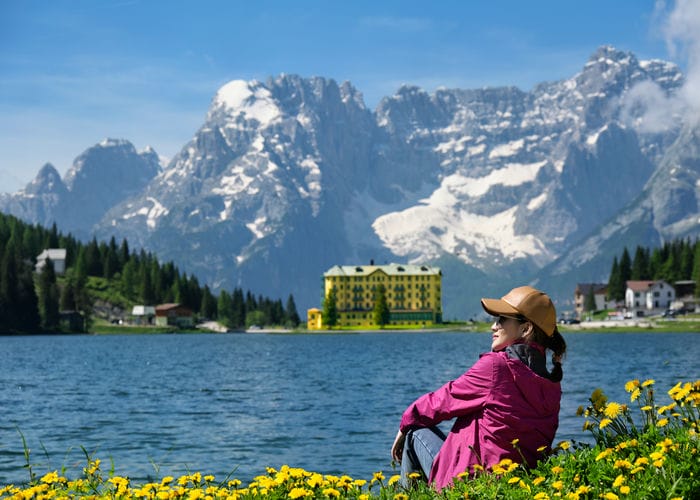
Hiking in the Dolomites offers stunning landscapes and unique experiences.
With different trails suited for varying skill levels, adventurers can explore dramatic peaks, serene lakes, and picturesque valleys.
Tre Cime Di Lavaredo
The Tre Cime Di Lavaredo is one of the most popular hiking trails in the Dolomites.
Located near Cortina d’Ampezzo, this route provides breathtaking views of the famous three peaks.
The Tre Cime di Lavaredo Loop, which spans about 6 miles, is an impressive walk that offers scenic beauty without being overly challenging.
Hikers can start from Rifugio Auronzo and continue to Rifugio Lavaredo, enjoying vistas of rugged mountains and lush valleys.
This trail is suitable for most ability levels, making it accessible to a wide range of outdoor enthusiasts.
Seceda Ridge
Seceda Ridge features remarkable vistas over Val Gardena and the Alpe di Siusi region.
This hike begins in Ortisei, where travelers can take a cable car to reach Seceda.
Once there, the views of the nearby peaks, including Peitlerkofel and Sassolungo, are captivating.
On clear days, the ridge walk offers endless panoramas and photo opportunities.
The trails are well-marked, catering to intermediate hikers looking to immerse themselves in nature.
The unique landscape and accessible terrain make Seceda Ridge a must-visit.
Lago Di Sorapis
The Lago Di Sorapis trail is renowned for its striking turquoise waters surrounded by majestic mountains.
To reach this enchanting lake, hikers embark from Passo Tre Croci near Cortina d’Ampezzo.
The trail measures about 7.5 miles round trip, featuring varying terrain that includes rocky paths and forested areas.
The highlight is undoubtedly the lake itself, which is perfect for a refreshing break.
Given its popularity, it's best to visit early in the morning or late afternoon to avoid crowds. This trail suits moderate-level hikers seeking a rewarding experience.
Alta Via 1
Alta Via 1 is a long-distance trail that offers a comprehensive adventure through the Dolomites.
This route stretches approximately 75 miles from Lago di Braies to Belluno, passing through Alta Badia and Val Venegia.
The path showcases the diverse beauty of the region, from lush valleys to dramatic peaks and rustic alpine huts.
Hikers can choose to tackle the entire trek, which takes about 10 days, or enjoy shorter segments.
As it covers various landscapes, Alta Via 1 requires good fitness levels, making it ideal for experienced hikers. It offers a mix of challenges and striking scenery, capturing the essence of the Dolomites.
Hut-To-Hut Hiking In The Dolomites
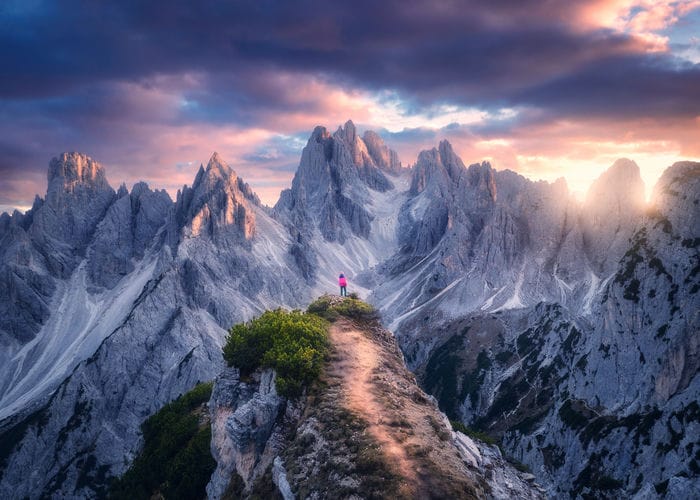
Hut-to-hut hiking in the Dolomites offers a unique adventure through stunning landscapes, staying overnight in alpine huts along the way. This experience blends nature, exercise, and culture, providing breathtaking views and welcoming lodgings.
Explanation Of The Hut-To-Hut Hiking Concept
Hut-to-hut hiking involves traveling a trail where hikers stay overnight in mountain huts instead of returning to a base each evening.
These alpine huts, known as rifugi in Italian, provide meals, accommodations, and a chance to meet fellow hikers.
Staying in these huts allows hikers to travel farther over a series of days with minimal gear.
They enjoy the opportunity to experience the mountains more intimately, waking up each morning amidst nature's beauty and often above the clouds.
It’s a flexible way of exploring the Dolomites and is suitable for both beginners and experienced hikers, given the range of routes available.
Popular Routes And Huts
One of the most classic routes is the Alta Via 1, stretching about 140 kilometers and renowned for its scenic beauty and accessibility.
This route includes stays at popular huts like Rifugio Puez, noted for its stunning views and cozy atmosphere.
Another favorite is the Alta Via 2, a bit more challenging, offering a rugged experience and unforgettable vistas.
On this route, Rifugio Nuvolau offers not only a place to rest but also some of the most panoramic views in the region.
These huts provide comfortable beds, hearty meals, and often have shared dormitories, creating a community feel among hikers.
Tips For Planning A Hut-To-Hut Hike
When planning a hut-to-hut hike, the season matters. July to mid-September is ideal, as trails are clear of snow and huts are open.
Booking in advance guarantees a spot in the huts, especially along popular routes like Alta Via 1 and 2.
Hikers should prepare for varying weather, packing layers, and waterproof gear.
Sturdy boots are essential given the diverse terrain.
Map out daily distances according to fitness levels. Remember that huts offer meals, so carrying food is minimal.
Hiking with a guide can add safety and enrich the experience with local insights.
Scenic Lakes In The Dolomites
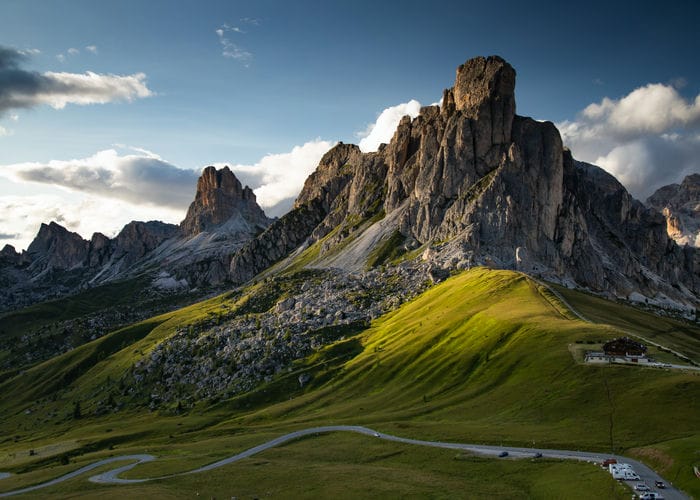
The Dolomites are home to some of the most stunning lakes in northern Italy, each offering unique views and experiences.
Visitors can explore serene waters surrounded by dramatic mountain landscapes. The following highlights describe three remarkable lakes worth visiting.
Lago Di Braies
Lago di Braies, also known as the Pragser Wildsee, is a popular destination in the Dolomites. It is situated in a stunning alpine setting, with emerald waters reflecting the surrounding peaks.
Visitors often enjoy a leisurely walk around the lake, which is relatively accessible. For photographers, the lake offers countless picturesque spots.
During warmer months, renting a rowboat is a popular activity. The lake’s beauty changes with the seasons, making it a year-round attraction.
Winter transforms Lago di Braies into a snowy wonderland, while autumn paints the landscape in warm hues. This versatility makes it appealing throughout the year.
Additionally, the lake is often a starting point for various hiking trails, such as paths leading into nearby Fanes-Sennes-Prags Nature Park.
Lago Di Carezza
Lago di Carezza, sometimes called the "Rainbow Lake," is celebrated for its vibrant colors. These colors stem from its crystal-clear waters, which reflect the deep blues and greens of the surrounding forests and mountains.
Located near Latemar massif, Lago di Carezza is easily accessible by road, attracting both tourists and locals alike.
A short paved path encircles the lake, offering spectacular views at every turn. Visitors often marvel at the pristine environment; photography is a must-do activity here.
Legend has it that a sorcerer created a rainbow to win the heart of a mermaid, and when it failed, the rainbow shattered into the lake’s waters. Such stories add a touch of magic to the already enchanting scenery.
In winter, the lake can freeze, creating a different yet equally beautiful landscape.
Lago Di Sorapis
Lago di Sorapis is known for its striking turquoise water and its scenic hike.
Nestled high in the Dolomites, reaching the lake requires a challenging yet rewarding hike.
The trail, starting from Passo Tre Croci, takes hikers along rugged paths with panoramic views. This adventure usually takes about 2-3 hours one way, depending on pace and trail conditions.
Upon reaching the lake, visitors are rewarded with an unparalleled vista. The stark contrast of the bright blue water against rocky cliffs is a sight to behold.
For those interested in geology, the lake sits in a glacial basin, highlighting the power of natural forces.
Although remote, Lago di Sorapis is a must-see for experienced hikers looking for breathtaking beauty in the Dolomites.
Wildlife And Flora In The Dolomites
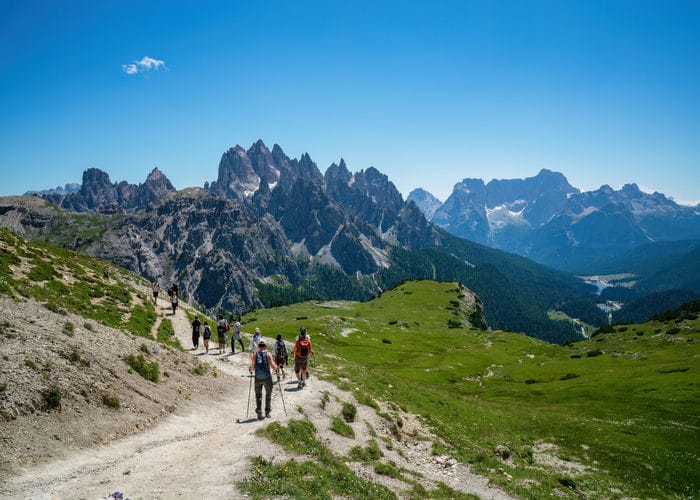
The Dolomites, recognized as a UNESCO World Heritage Site, are home to a rich variety of plants and animals.
Visitors can explore the stunning mountain scenery and discover unique species both in the alpine pastures and at higher altitudes.
Nature enthusiasts will surely appreciate the vibrant ecosystem and efforts to protect this extraordinary environment.
Common Wildlife Sightings
In the Dolomites, wildlife is abundant. Animals like the chamois and ibex are frequently seen navigating the rocky landscapes.
These agile creatures thrive on steep slopes and are easier to spot in areas like the Puez Odle Nature Park.
Bird watchers may glimpse golden eagles soaring above, while marmots, known for their whistling alerts, are often found in alpine meadows.
Hikers might also encounter roe deer and red foxes while exploring lower forested areas. Observing these animals in their natural habitat highlights the Dolomites’ thriving ecosystem.
Unique Plant Species
The Dolomites host a spectacular range of plant species. Alpine flowers such as gentians, edelweiss, and rhododendrons add vibrant colors to spring meadows.
These flowers are adapted to high altitudes and are typically found across rocky meadows.
Larch and pine forests cover the lower slopes, creating beautiful contrasts with the floral displays higher up.
In particular, edelweiss—synonymous with alpine folklore—is a rare find and a symbol of pristine mountain inheritance.
The diversity of flora in UNESCO-protected areas makes the Dolomites a must-see destination for botany lovers.
Conservation Efforts
Efforts to preserve the Dolomites’ natural heritage are vital for maintaining its rich biodiversity.
Puez Odle Nature Park is a significant conservation site that highlights sustainable tourism practices and protects the unique plant and animal life that thrive here.
Projects focus on habitat conservation, reducing human impact, and promoting environmental awareness among visitors.
The aim is to balance nature preservation with allowing people to enjoy the breathtaking landscapes these mountains offer.
Through these efforts, the pristine beauty and ecological importance of the Dolomites continue to be safeguarded for future generations.
Tips For A Successful Hiking Trip In The Dolomites
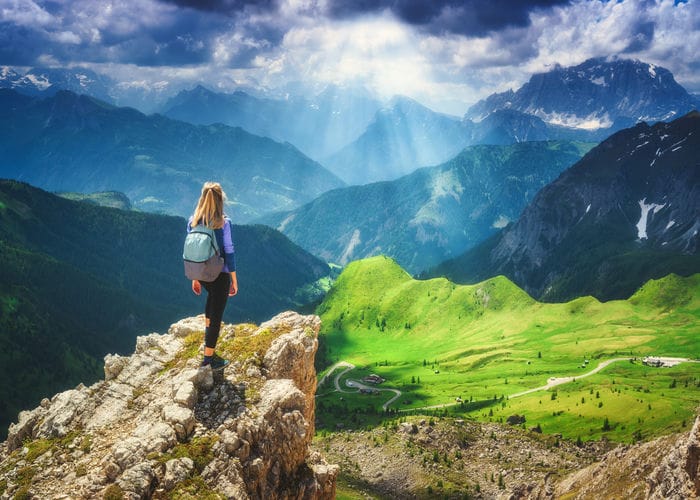
Embarking on a hike in the Dolomites is filled with breathtaking scenery and rewarding challenges. Key considerations involve fitness, navigation, and respecting the natural environment and local customs.
1. Fitness And Preparation
Hiking in the Dolomites varies from moderate to difficult, demanding good physical fitness.
Regular cardiovascular and strength training, including walking with a weighted backpack, is recommended before the trip.
Packing the right gear is crucial. Essentials include:
- Suitable shoes like sturdy hiking boots with good ankle support.
- Layered clothing to adjust to changing temperatures.
- Hiking poles for balance.
Check weather forecasts regularly, as conditions can change quickly.
A reliable Dolomites hiking guide can offer insights into trail difficulty and estimated completion times, aiding preparation.
Plan rest days to avoid overexertion, allowing the body to adapt to the new physical demands.
2. Navigational Tips
Navigating trails in the Dolomites often requires more than a basic map.
It's wise to download offline maps or use a GPS device, as some areas may lack mobile signals.
Many trails are marked, but conditions like fog can obscure signage, making electronic aids useful.
Familiarize yourself with the trailheads and destinations before starting.
Pay attention to trail markers, usually painted on rocks and trees. A printed map can be a valuable backup, with information about all the key trails.
Always maintain awareness of your location and time to ensure a safe return before nightfall.
Include a small compass and printed trail description in your pack.
Not everyone speaks English in remote areas, so knowing a few Italian phrases could be advantageous.
3. Respecting Nature And Local Customs
The stunning beauty of the Dolomites calls for hikers to tread lightly.
Stay on marked trails to minimize impact on fragile ecosystems, and always practice Leave No Trace principles.
This means packing out all waste, taking care not to disturb wildlife, and avoiding picking plants.
Respect local traditions by being considerate of other hikers and locals.
In some areas, it's customary to greet fellow hikers with a friendly 'buongiorno' or 'ciao.'
Engage with local culture by learning about the history and significance of the Dolomites.
Follow open and close times for protected areas and trails, and adhere to any posted signs and guidance.
Being aware of and respecting local customs enhances the experience and contributes to the preservation of this unique environment.
Final Thoughts
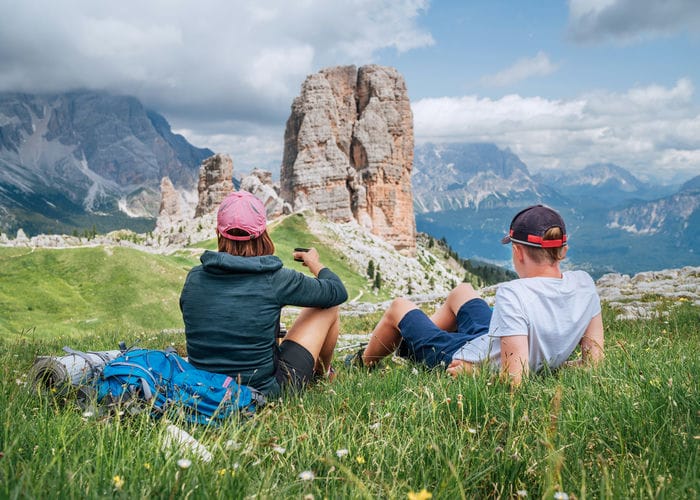
Hiking the Dolomites is an unforgettable adventure that combines breathtaking scenery, physical challenges, and cultural immersion.
Whether you’re navigating the iconic Tre Cime di Lavaredo, marveling at the turquoise waters of Lago di Sorapis, or embarking on a multi-day hut-to-hut trek, these trails promise a deep connection to nature and the region’s rich history.
With careful preparation, respect for the environment, and a spirit of exploration, your journey through this UNESCO World Heritage Site will leave lasting memories.
The Dolomites are more than a hiking destination—they’re a testament to the beauty and resilience of the natural world, waiting to inspire every visitor who ventures into their rugged embrace!





